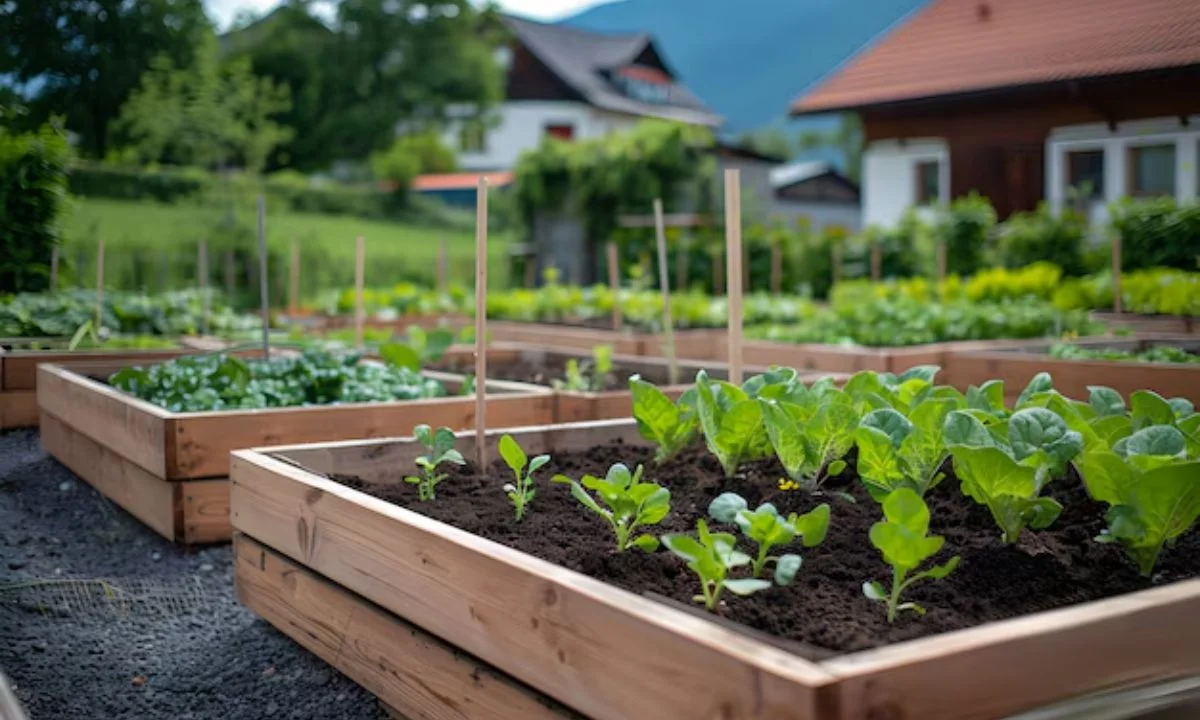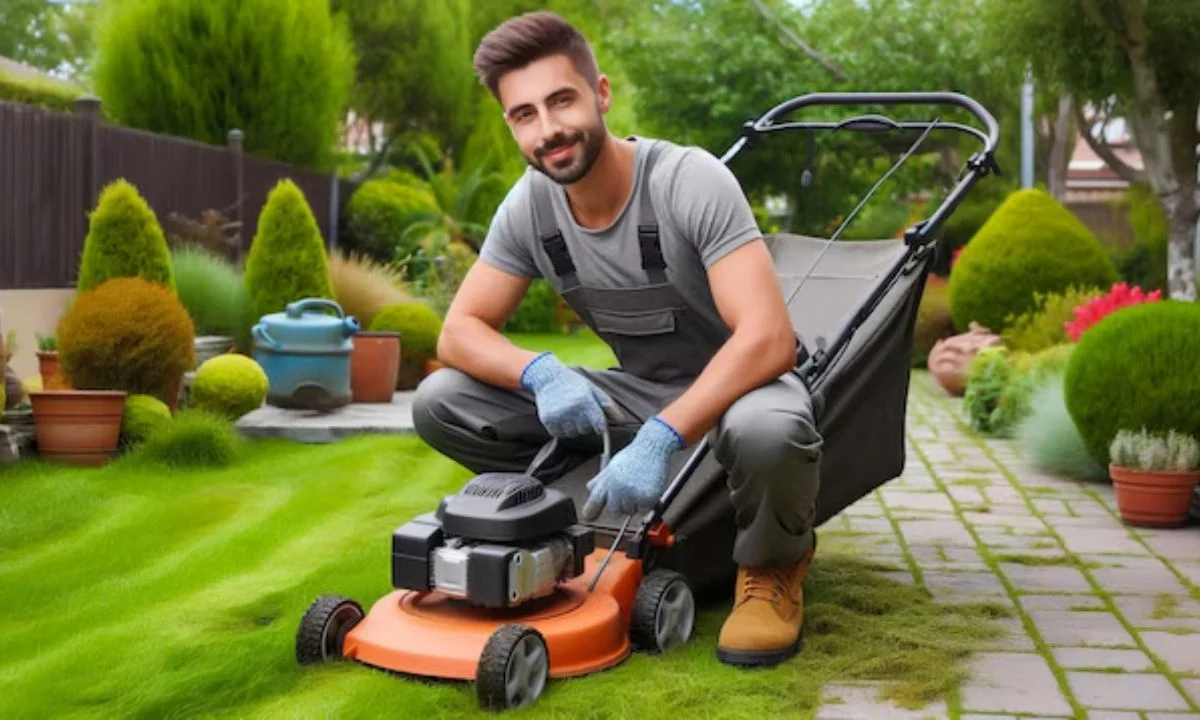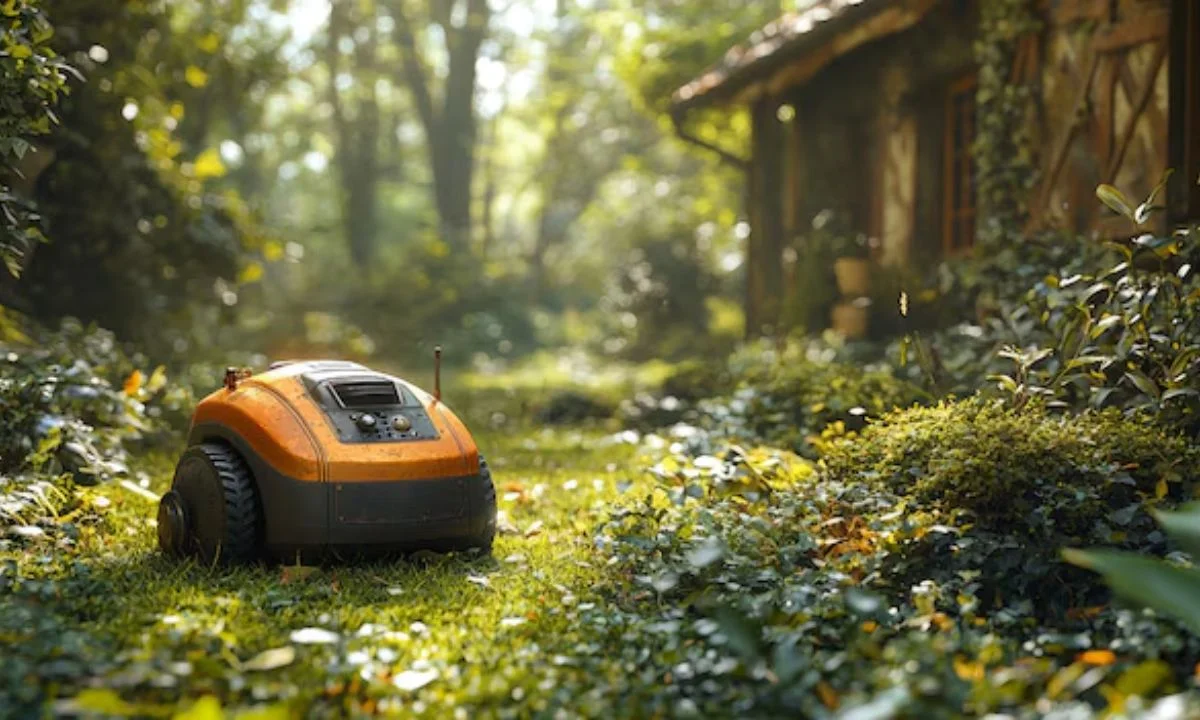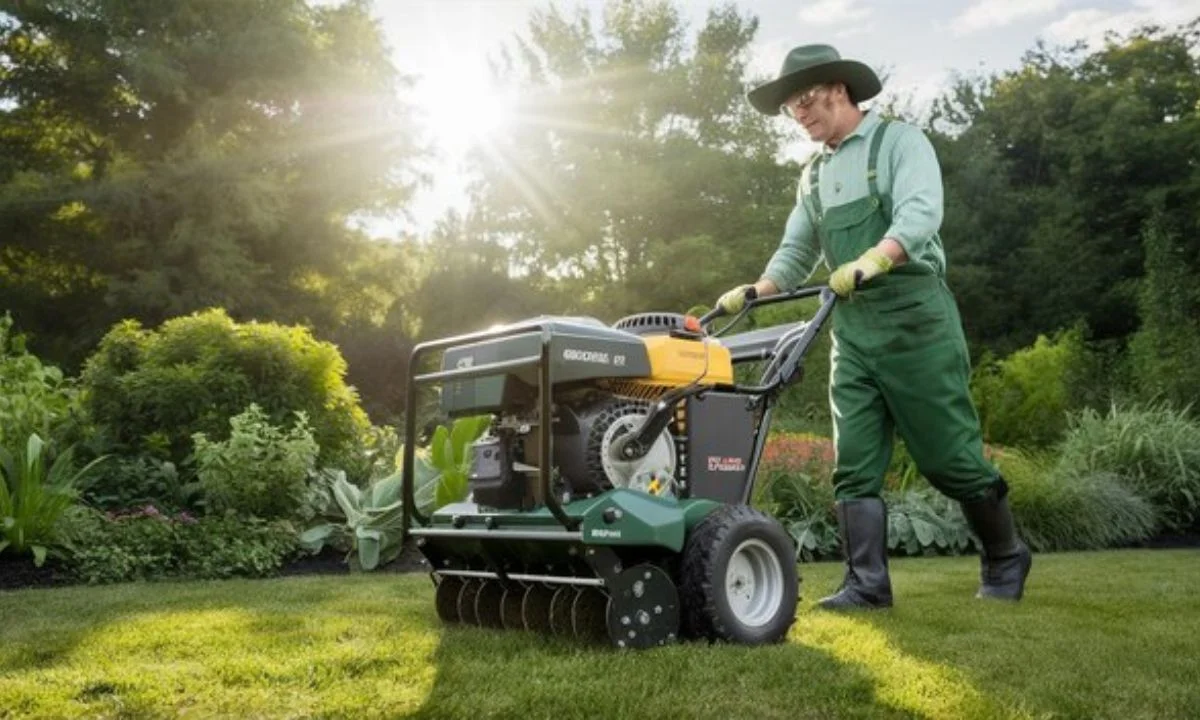If you’re looking to improve your gardening game, then exploring various raised garden bed ideas is a fantastic way to start. Raised garden beds offer a simple and effective method for growing vegetables, flowers, and herbs while providing better soil control and easier maintenance. Whether you’re new to gardening or have years of experience, raised garden beds can help you cultivate healthier plants with less effort. In this article, we’ll share creative raised garden bed ideas to inspire your next garden project.
What are Raised Garden Beds?
A raised garden bed is essentially an elevated garden box that sits above the ground. These beds are typically framed using wood, stone, metal, or recycled materials and can vary in size, shape, and height. The purpose of a raised garden bed is to create a controlled environment for plants, which allows for better soil quality, improved drainage, and easier access for gardeners.
Must read Gardening with Creekside: How to Create a Beautiful Garden by the Water
Benefits of Using Raised Garden Beds
Better Soil Control
One of the biggest advantages of raised garden beds is the ability to control the quality of your soil. You can fill the bed with rich, organic soil that suits the needs of your plants. This is especially helpful if the natural soil in your yard is rocky, compacted, or lacks nutrients.
Easier Access and Maintenance
Raised beds make gardening more comfortable by reducing the need to bend over or kneel on the ground. This can be particularly beneficial for elderly gardeners or those with mobility issues. The defined edges of the raised bed also help keep weeds at bay and make it easier to maintain a tidy garden.
Better Drainage
Raised beds are known for their superior drainage compared to traditional in-ground gardens. This helps prevent water from pooling around the roots of your plants, reducing the risk of root rot and other water-related problems.
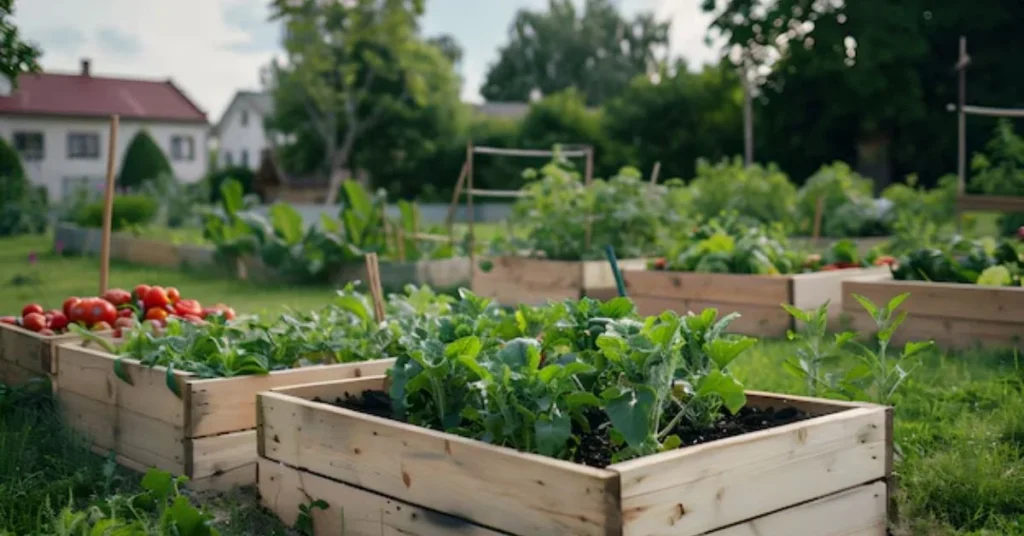
Popular Materials for Raised Garden Beds
Wooden Raised Garden Beds
Wood is one of the most popular materials for building raised garden beds. Cedar and redwood are excellent choices because they naturally resist decay, making them long-lasting and ideal for outdoor use. Wooden beds can be built in various shapes and sizes, and they offer a classic look that fits well with most garden styles.
Metal Raised Garden Beds
Metal garden beds are durable and can add a modern touch to your outdoor space. Galvanized steel or corrugated metal is often used for these beds, providing a sleek and industrial aesthetic. Metal beds are resistant to pests and decay, making them a low-maintenance option for your garden.
Stone Raised Garden Beds
Stone or brick raised garden beds offer a timeless, rustic look. These materials are sturdy and can withstand the elements for many years. Stone beds can be a bit more expensive and labor-intensive to build, but they add a beautiful and natural element to your garden space.
Recycled Materials
For an eco-friendly option, consider building raised garden beds using recycled materials such as old wooden pallets, cinder blocks, or reclaimed wood. Not only does this approach reduce waste, but it also adds a unique and personal touch to your garden.
Raised Garden Bed Ideas to Inspire You
Tiered Raised Garden Bed
A tiered raised garden bed is perfect if you’re working with limited space or want to add dimension to your garden. The tiers allow for different plants to be grown at various heights, which can enhance the visual appeal of your garden. This design is especially great for small plants, herbs, or flowers.
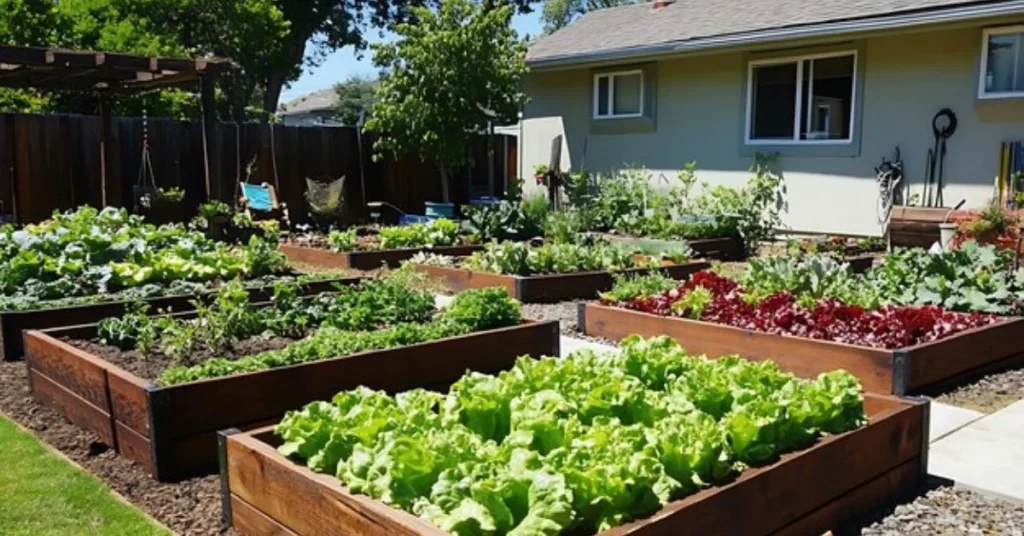
Keyhole Garden Bed
A keyhole garden bed features a circular design with a small composting basket in the center. This basket allows you to compost kitchen scraps directly in the garden, providing nutrients for your plants. The keyhole design also makes it easy to reach all parts of the bed, reducing the need for walking on the soil.
Elevated Planter Box
An elevated planter box is an excellent raised garden bed idea for gardeners who want to save space or need better accessibility. These planter boxes are typically waist-high, making them perfect for balcony gardens, patios, or small backyards. They can be used to grow herbs, flowers, and even small vegetables.
U-Shaped Raised Garden Bed
A U-shaped raised garden bed allows easy access to all sides of the bed without the need for stepping into the soil. This design is perfect for larger gardens and is great for growing a variety of vegetables and flowers. The U-shape also allows for efficient use of space, making it easier to maintain your garden.
Square Foot Garden Bed
If you’re new to gardening or working with a small space, a square foot garden bed might be just what you need. This method involves dividing a raised garden bed into a grid of 1-foot squares, with each square dedicated to a specific plant. This design makes gardening simple, organized, and efficient.
How to Build a Raised Garden Bed
Building a raised garden bed can be a fun and rewarding DIY project. Here’s a quick guide to help you get started:
- Choose a Location: Select a sunny spot in your yard or garden. Most plants need at least 6-8 hours of sunlight per day.
- Pick Your Materials: Decide whether you want to use wood, metal, stone, or recycled materials for your bed. Make sure the materials are sturdy and safe for gardening.
- Assemble the Frame: Measure and cut your materials to the desired size, then assemble them into a rectangular or square frame. Secure the corners with screws or brackets.
- Fill with Soil: Once the frame is in place, fill it with a high-quality, nutrient-rich soil mix. You can also add compost or other organic matter to improve the soil.
- Plant Your Garden: Finally, plant your seeds or seedlings, water them regularly, and watch your garden grow!
Raised Garden Bed Design Tips
Consider Companion Planting
Companion planting involves growing plants that benefit each other when grown together. For example, planting basil alongside tomatoes can improve flavor and deter pests. Consider using companion planting techniques to maximize the potential of your raised garden beds.
Add a Trellis
A trellis can be added to the back or sides of your raised garden bed to support climbing plants like cucumbers, peas, and beans. This not only saves space but also adds height and interest to your garden.
Incorporate Drip Irrigation
To ensure your plants are getting consistent moisture, consider installing a drip irrigation system. This method delivers water directly to the roots, preventing overwatering and saving time on garden maintenance.
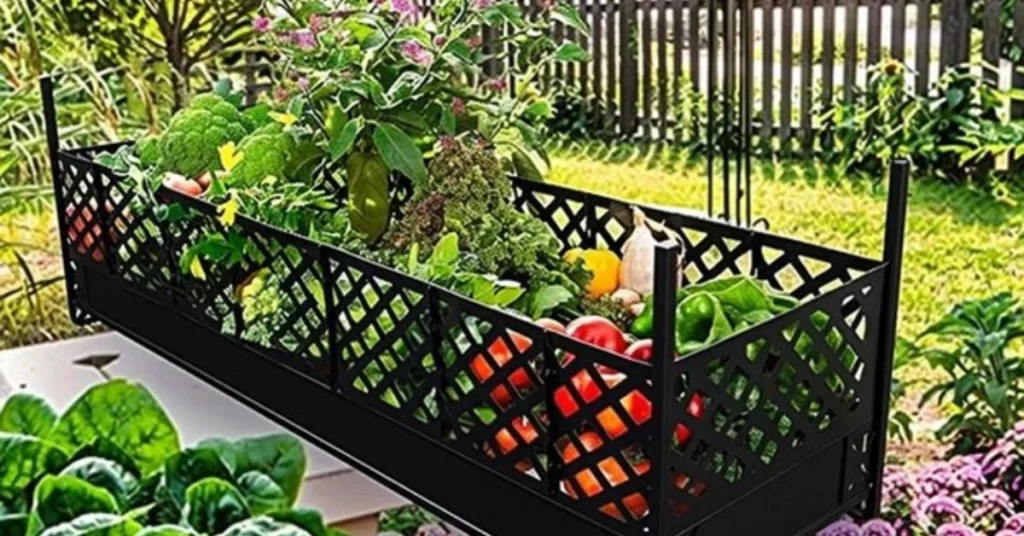
Conclusion: Why Raised Garden Bed Ideas Matter
Incorporating creative raised garden bed ideas into your outdoor space can elevate your gardening experience, making it easier, more accessible, and more enjoyable. Raised garden beds offer countless benefits, from better soil control to improved accessibility and aesthetics. Whether you’re building a simple wooden bed or experimenting with a unique keyhole design, raised garden beds provide the perfect platform for growing healthy, vibrant plants.
By exploring and implementing different raised garden bed ideas, you can create a functional and beautiful garden that suits your space, budget, and style preferences. Gardening doesn’t have to be complicated—it’s all about finding the right solutions to make it work for you. Click here for more information.
What are the best materials for raised garden beds?
The best materials for raised garden beds include wood, metal, stone, and recycled materials. Cedar and redwood are popular wooden options due to their durability and resistance to decay.
How deep should a raised garden bed be?
A raised garden bed should be at least 6-12 inches deep for most plants. For root vegetables like carrots or potatoes, a depth of 12-18 inches is recommended.
Can I use raised garden beds for small spaces?
Yes, raised garden beds are ideal for small spaces. Designs like tiered beds or elevated planter boxes make efficient use of limited space while still providing ample room for plants to grow.
How often should I water a raised garden bed?
The frequency of watering depends on the climate and the type of plants you’re growing. In general, raised garden beds need to be watered more frequently than in-ground gardens, as they tend to dry out faster.
What are the benefits of raised garden beds?
Raised garden beds offer several benefits, including better soil control, improved drainage, easier maintenance, and accessibility for gardeners of all ages and abilities.

